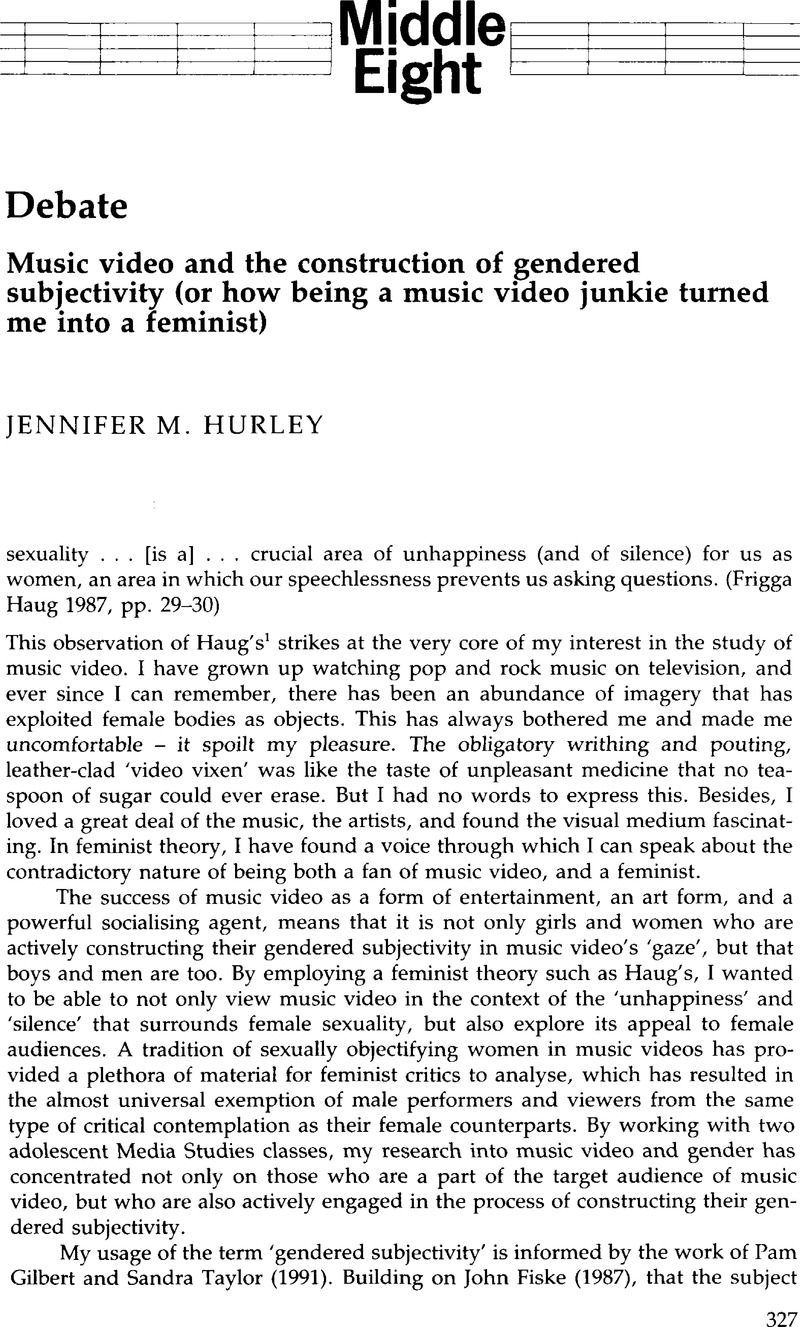Crossref Citations
This article has been cited by the following publications. This list is generated based on data provided by Crossref.
Bechdolf, Ute
1997.
Kultur — Medien — Macht.
p.
201.
Cooper, B. Lee
1998.
Images of women in popular song lyrics: A bibliography.
Popular Music and Society,
Vol. 22,
Issue. 4,
p.
79.
Bechdolf, Ute
1999.
Kultur — Medien — Macht.
p.
213.
Cooper, B. Lee
1999.
Women's studies and popular music stereotypes.
Popular Music and Society,
Vol. 23,
Issue. 4,
p.
31.
Bechdolf, Ute
2006.
Kultur — Medien — Macht.
p.
425.
Bechdolf, Ute
2008.
Kultur — Medien — Macht.
p.
425.
Mandrell, James
2014.
Shania Twain Shakes Up Country Music.
The Journal of Popular Culture,
Vol. 47,
Issue. 5,
p.
1015.
Viljoen, Martina
2014.
Representations of women in music: what difference does difference make?.
Journal of the Musical Arts in Africa,
Vol. 11,
Issue. 1,
p.
73.
Boxman-Shabtai, Lillian
2018.
Reframing the popular: A new approach to parody.
Poetics,
Vol. 67,
Issue. ,
p.
1.
Liu-Rosenbaum, Aaron
2018.
Weaving “Eroticism, Cosmology, and Politics” in Early Female Technopop: Three Discourses with the Informatics of Domination.
Popular Music and Society,
Vol. 41,
Issue. 1,
p.
16.
Spracklen, Karl
2018.
Sex, drugs, Satan and rock and roll: re-thinking dark leisure, from theoretical framework to an exploration of pop-rock-metal music norms.
Annals of Leisure Research,
Vol. 21,
Issue. 4,
p.
407.
Coates, Norma
2018.
A Companion to the History of American Broadcasting.
p.
321.
Osborn, Brad
2021.
Resistance Gazes in Recent Music Videos.
Music and the Moving Image,
Vol. 14,
Issue. 2,
p.
51.
Chahbane, Sarra
2023.
Framing gender in Moroccan contemporary pop music videos: A content analysis of gender portrayals.
Women's Studies International Forum,
Vol. 99,
Issue. ,
p.
102759.



